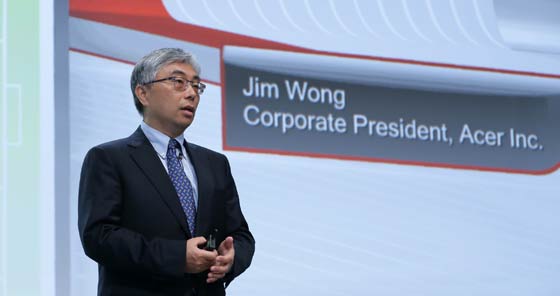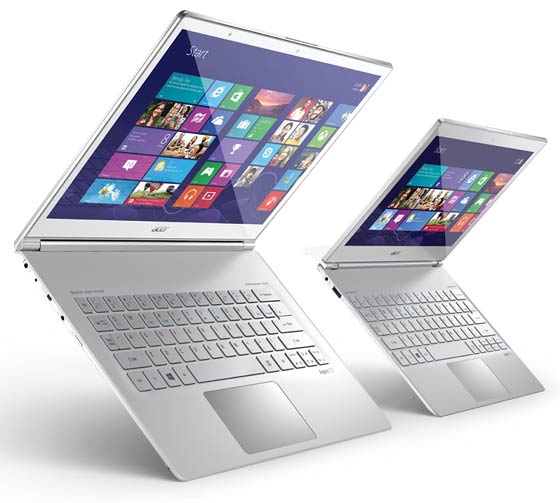Acer President Jim Wong has taken part in an end of year interview with reporters at DigiTimes in Taipei, Taiwan. In the interview Mr Wong talks about the opportunities and challenges brought about by the launch of Windows 8. He then focuses on touchscreens and also talks about how Acer are different to other companies. Acer’s new strategy isn’t to slavishly aim for bigger numbers in the market, instead the company will “take a more stable approach for its future strategy that will make consumers love the brand and its products” said Wong.

Windows 8 launch
Wong told the DigiTimes reporters that the end of October launch for Windows 8 was rather late for partners to promote products for sale in the holiday season. Therefore it has been hard for Acer to test, plan and re-focus upon the most popular products in time to capture much Christmas cheer. Mr Wong said all brands are in the same boat with Windows 8 and he would like to see more sales numbers, as current numbers show early adopter sales rather than mass market acceptance.
Turning to the issue of Windows RT and Windows 8 devices the Acer president reaffirmed the company’s wish to “focus on Windows 8 with x86 architecture” and continue to monitor and evaluate non-x86 platforms. However the company does still have plans in place to release some Windows RT devices and will pull the trigger when it believes the time is right.
The revolutionary interface changes in Windows 8 need time to adapt to and for customers to learn how to use properly. The DigiTimes writes “In the past, market observers would accuse Windows of lacking innovations. And Windows 8 with brand new features have still been greeted with pessimism. Some observers believe the new interface and touchscreen control will dramatically delay adoption by consumers. But companies must take risks when introducing innovations, and therefore it is still too early to say whether Windows 8 is a success or not.”
“Touchscreen control is an irreversible trend”
Acer has researched touchscreen use and this research “points out that a consumer, after controlling a touchscreen product for more than 20 minutes, would want to use his or her fingers to touch any display he or she sees. This indicates that touchscreen control is an irreversible trend. Acer believes touchscreen control will be a strong selling point, but it still needs more time to take off.” With this in mind Mr Wong says that he believes that within 2 to 3 years that shipments of touchscreen notebooks will exceed traditional notebooks. Currently touchscreen control interfaces add more than $100 to the cost of a notebook but it is “still a market worth of investing in”.
Alongside the increased touchscreen popularity Acer believes that high resolution displays, like Apple’s Retina displays, will also become increasingly popular.

Hearts and minds
Mr Wong says that Acer doesn’t want to challenge the likes of Lenovo and HP for the prize of top PC vendor by shipments, he says that “Acer's philosophy and strategies are different from others”. Now Acer will start to focus on winning consumer trust and will avoid market gimmicks. Wong said that “Acer will take a more stable approach for its future strategy that will make consumers love the brand and its products.” While maintaining a level of market share to enable competitive economies of scale Acer will try and be more innovative and strengthen its R&D efforts.
Just before Christmas we had a sniff of a couple of new tablets coming from Acer, both attractive in their own ways. Firstly the $99 Android powered Acer Iconia B1 tablet, for the developing world, looked well designed and of a decent spec, coming with a SIM slot - important for networking in places such as Africa. Also in the same report it was good to hear a company wake-up, smell the coffee and think about making a not “too pricy” x86 powered Windows tablet.













